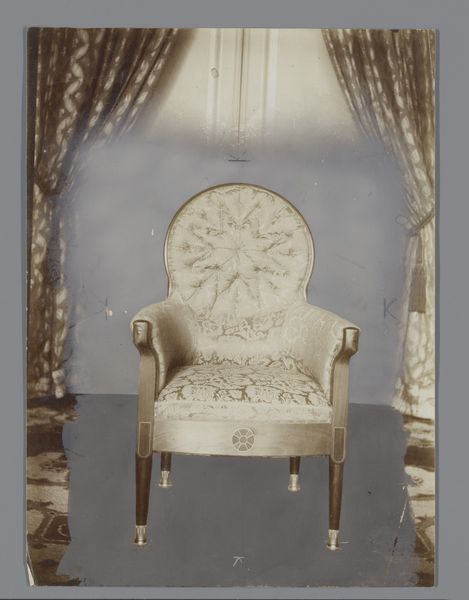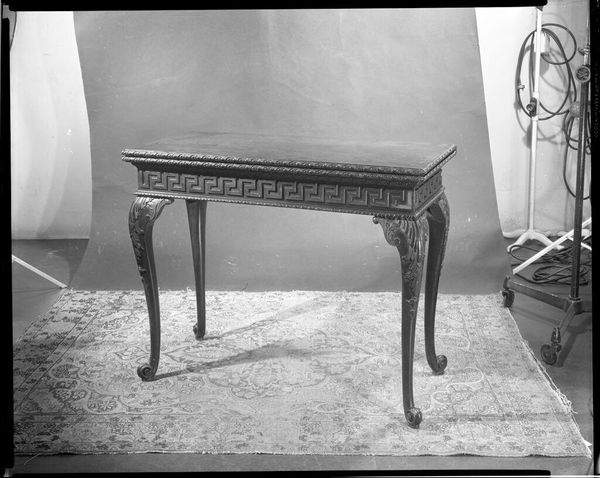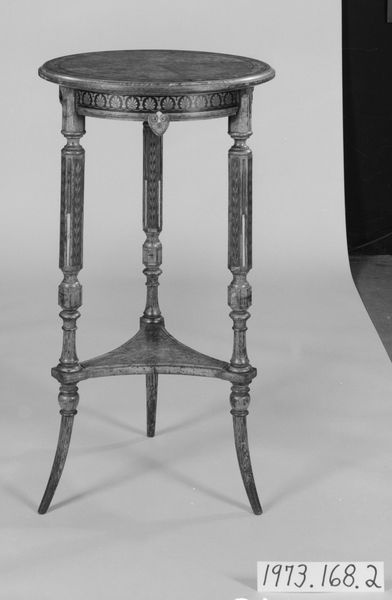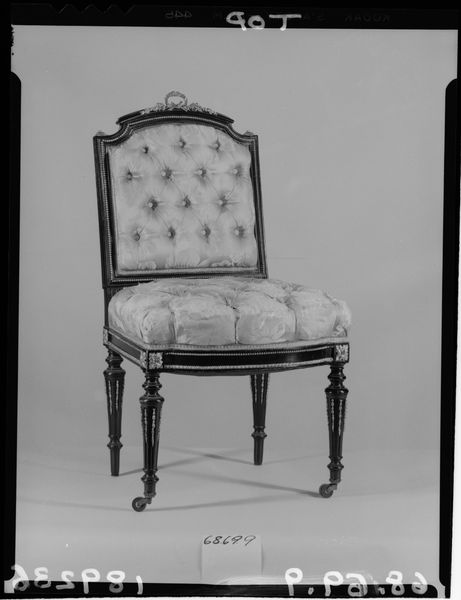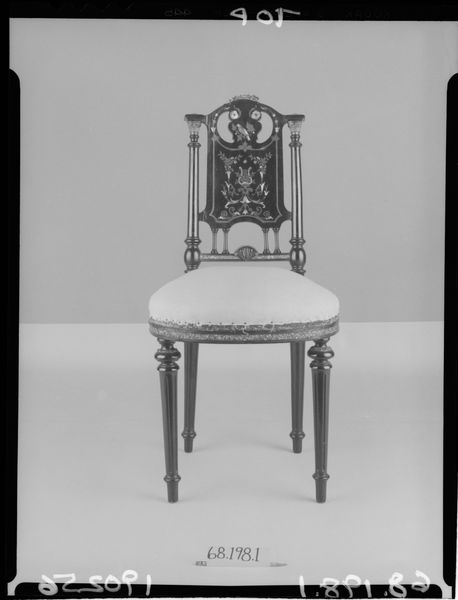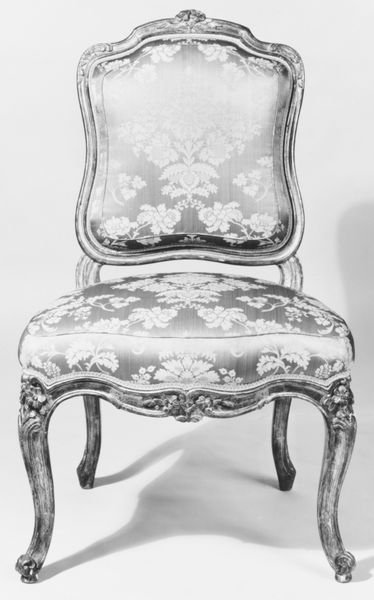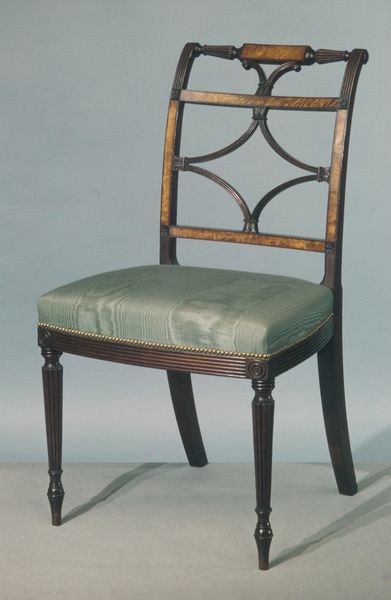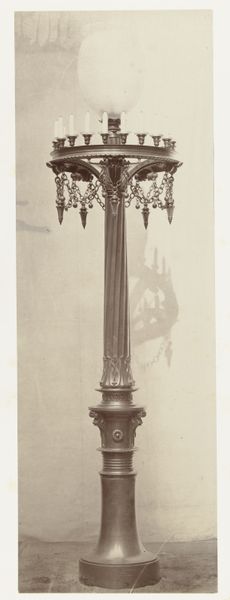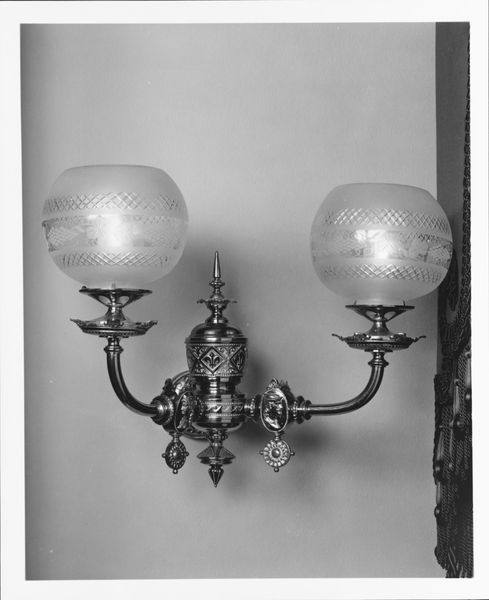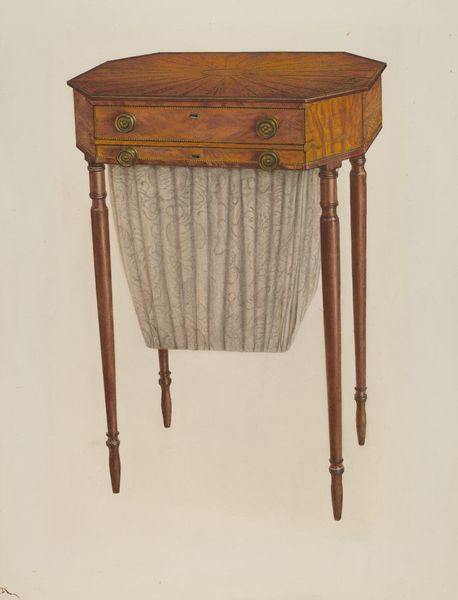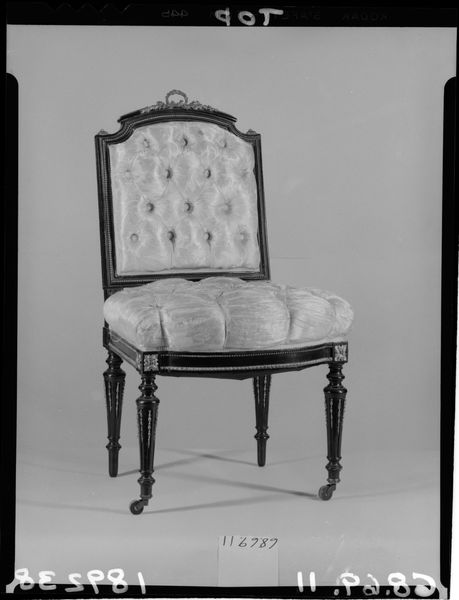
photography, wood
#
art-nouveau
#
photography
#
wood
Dimensions: height 231 mm, width 169 mm
Copyright: Rijks Museum: Open Domain
Editor: Here we have a photograph of a "Driepotige tafel naar ontwerp van Mathieu Lauweriks," or a three-legged table designed by Mathieu Lauweriks, around 1910. The photograph itself seems to emphasize the table’s elegance, the three legs creating a pleasing, balanced effect. It’s set against a very decorative backdrop. What is your read of this photograph? Curator: It's fascinating to consider the staging of this photograph, isn't it? The table, very much in the Art Nouveau style, is deliberately presented almost as a character in its own right. The decorative backdrop and ornate rug work to heighten the sense of luxury and craftsmanship, suggesting that the photo may have been intended to serve a specific commercial or promotional purpose for the design itself. Considering Lauweriks' known interests in the expressive potential of architecture and decorative design, do you think the photograph accurately conveys this feeling, or is it presenting a kind of elevated impression? Editor: I can see that. It seems to present a carefully constructed image of sophisticated domesticity, although the specific intent behind capturing the piece in the medium of photography intrigues me. Curator: Exactly. The decision to use photography here raises intriguing questions. Was it meant to disseminate the design widely through printed catalogs? Or, considering the era, to project a certain bourgeois aspiration? What societal values did objects like these three-legged tables represent? Editor: Those are definitely helpful ideas that highlight the power of an image to communicate intended societal impacts. Thank you for opening my eyes to new ways to perceive this photograph. Curator: My pleasure. Examining art through the lens of its social and historical context often unveils meanings we might otherwise overlook, doesn’t it?
Comments
No comments
Be the first to comment and join the conversation on the ultimate creative platform.
